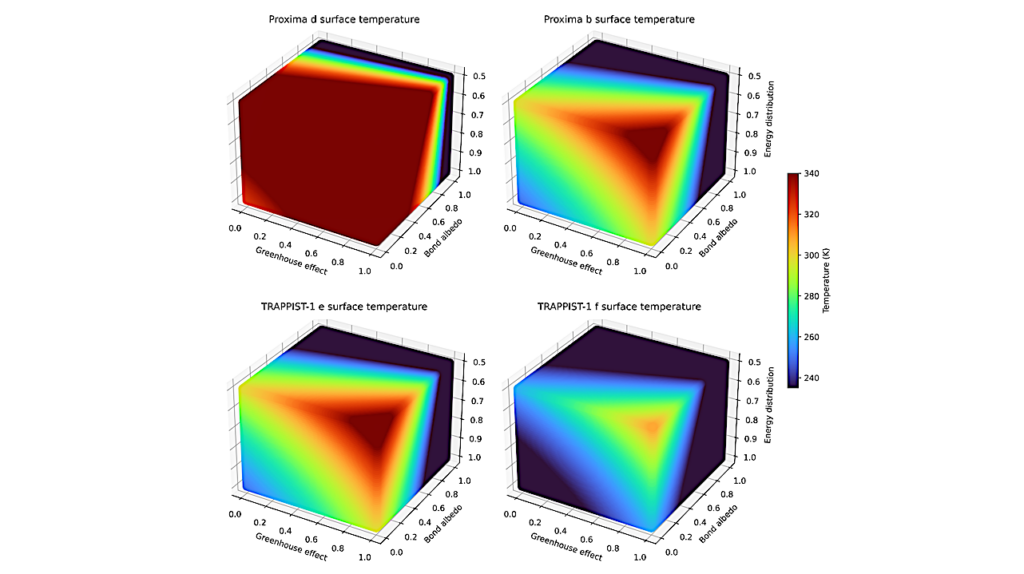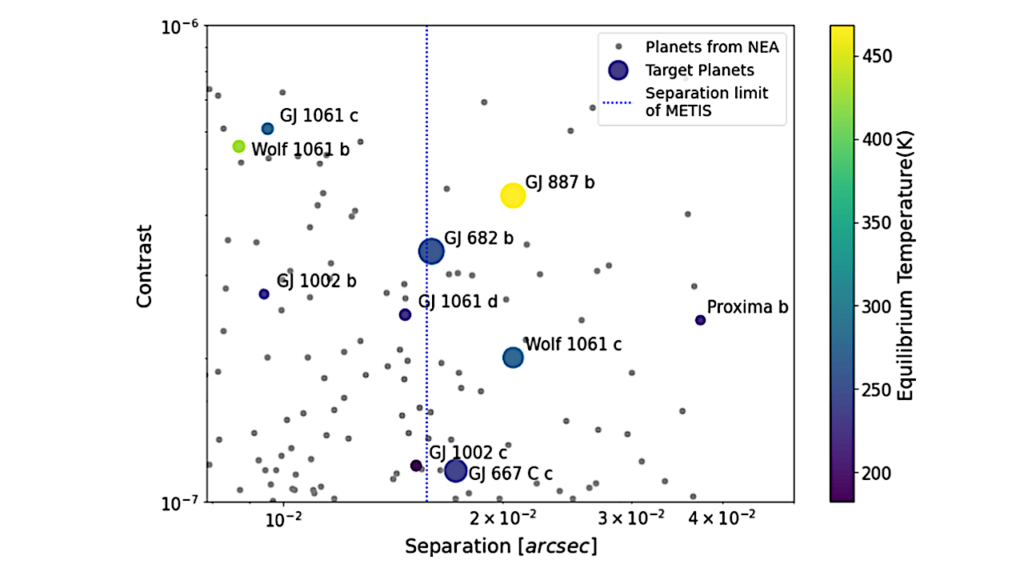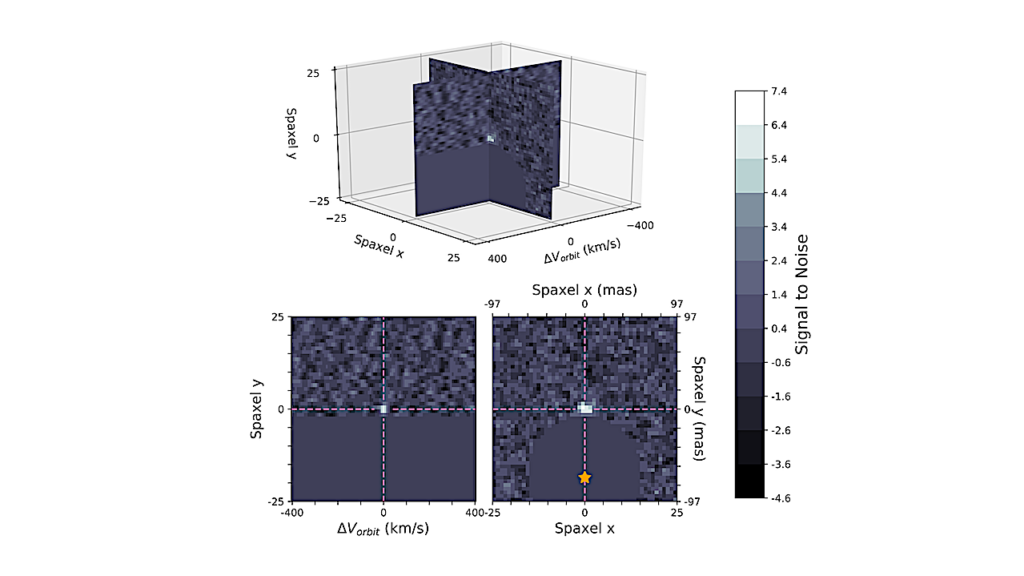3-D Climate Simulations for the Detectability of Proxima Centauri b

The discovery of a planet orbiting around Proxima Centauri, the closest star to the Sun, opens new avenues for the remote observations of the atmosphere and surface of an exoplanet, Proxima b.
To date, three-dimensional (3D) General Circulation Models (GCMs) are the best available tools to investigate the properties of the exo-atmospheres, waiting for the next generation of space and groundbased telescopes. In this work, we use the PlanetSimulator (PlaSim), an intermediate complexity 3D GCM, a flexible and fast model, suited to handle all the orbital and physical parameters of a planet and to study the dynamics of its atmosphere. Assuming an Earth-like atmosphere and a 1:1 spin/orbit configuration (tidal locking), our simulations of Proxima b are consistent with a day-side open ocean planet with a superrotating atmosphere.
Moreover, because of the limited representation of the radiative transfer in PlaSim, we compute the spectrum of the exoplanet with an offline Radiative Transfer Code with a spectral resolution of 1 nm. This spectrum is used to derive the thermal phase curves for different orbital inclination angles. In combination with instrumental detection sensitivities, the different thermal phase curves are used to evaluate observation conditions at ground level (e.g., ELT) or in space (e.g., JWST).
We estimated the exposure time to detect Proxima b (assuming an Earth-like atmosphere) thermal phase curve in the FIR with JWST with signal-to-noise ratio ≃1. Under the hypothesis of total noise dominated by shot noise, neglecting other possible extra contribution producing a noise floor, the exposure time is equal to 5 hours for each orbital epoch.
Daniele Galuzzo, Chiara Cagnazzo, Francesco Berrilli, Federico Fierli, Luca Giovannelli
Comments: 21 pages, 11 figures, accepted in the Astrophysical Journal
Subjects: Earth and Planetary Astrophysics (astro-ph.EP)
Cite as: arXiv:2102.03255 [astro-ph.EP] (or arXiv:2102.03255v1 [astro-ph.EP] for this version)
Submission history
From: Luca Giovannelli
[v1] Fri, 5 Feb 2021 16:00:39 UTC (8,160 KB)
https://arxiv.org/abs/2102.03255
Astrobiology, Astrochemistry,








